CH Precision A1.5 compared to the Soulution 711 – Mini Review
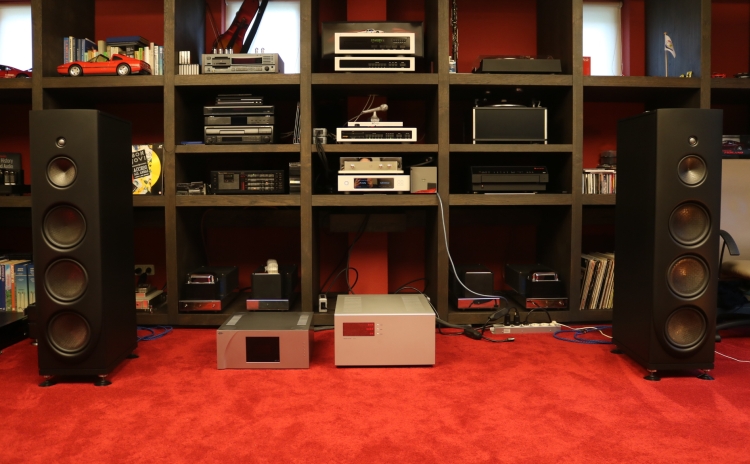
In the CH Precision A1 + C1 review, I made a brief comparison with the Soulution 711 and I also listened to the 711 using the Apogee Duettas in the Analog Domain M75/P75 review. When I reviewed the new CH Precision A1.5 I was amazed to find that it took all of the A1’s qualities and added to this significantly. In that review, I also briefly referenced the Soulution 711, speculating that the new A1.5 had attained “more of what made the 711 so endearing to me while becoming even better at the things that the A1 already did so well.” Well, now it is time to put that speculation to the test.
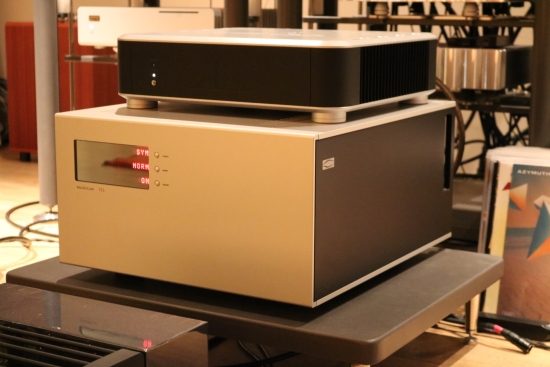
Above: the 711 during an earlier as part of the Analog Domain M75D/M75P review
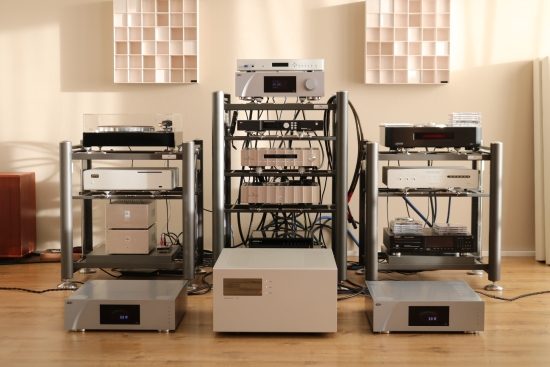
Above: the A1’s flanking the 711 as part of the CH Precision A1 + C1 review
Audio buddy Niels was not really looking forward to hauling his very heavy 711 over to me again so we decided to do it the other way around this time and carry out the comparison in his system.
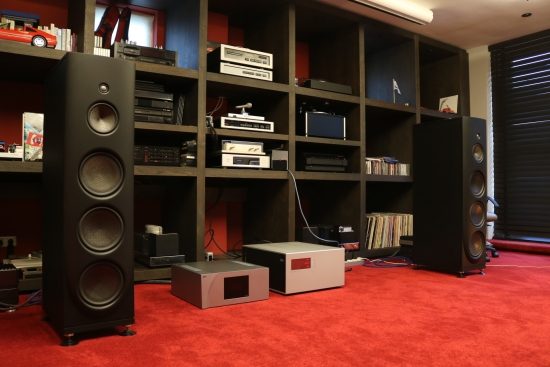
System Description
The core of Niels’ system that we used for this comparison consists of a Spectral 30SV preamp, Aurender S10 music server, connected to the Zanden 5000 Signature DAC via an MIT Oracle MAX digital interlink, Soulution 711 power amp, and Magico Q5 loudspeakers. Cables are MIT Oracle MA cinch between Zanden DAC and preamp, MIT Oracle MA XLR interlinks between pre- and power amp and MIT Shotgun Evo speaker cables. Power cables used in both cases are Belden 19364, with Oyaide 079 connectors for the CH A1.5 and with molded-on standard connectors for the Soulution 711. Alas, we could not swap these cables because the A1.5 uses a 20A connector and the 711 does not. At a later stage, we did experiment with the interlinks and used Cardas Clear and CH Precision Balanced Link, both XLR cables.
We used a playlist on the Aurender with diverse but familiar 44/16 material and started with Niels’ own setup so that I could reaccustom myself to his sound. A very nice aspect of both the CH and the Soulution amps is that while they both sound best after 30-60 minutes, they don’t change very noticeably while warming up. This enables very easy comparisons but just to give each amplifier an honest chance, we swapped from a warm Soulution to a cold CH as well as from a warm CH to a cold Soulution.
The CH A1.5 has an adjustable Local/Global Feedback ratio. After some experimentation with this, we felt that 10% was the best setting, which is the same setting that I use at home with the Wilson WP8.
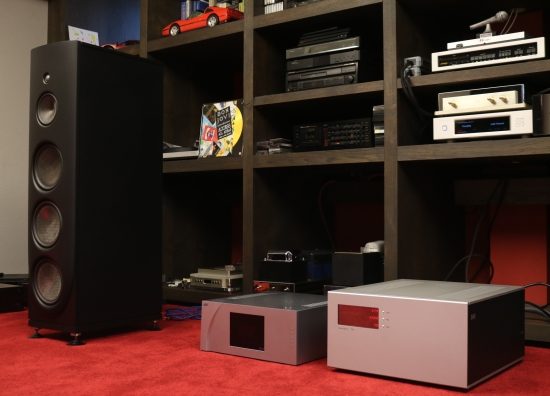
Comparisons
Coming from the Soulution 711 to the CH Precision A1.5, the latter was tighter in the bass and the 711 was bigger and fuller but less articulate and differentiated. The same relative difference was also evident in the treble which with the A1.5 was more refined and more highly resolving. Some recordings that contained edgy sounds that became a little bit too loud and forward with the 711 were more delicate with the A1.5 while retaining all the expression. We later found that the MIT cables were also doing these recordings no favors and that the Cardas cable provided a milder, friendlier presentation. Although the Cardas also rounded everything a bit, especially compared to the CH Precision Balanced Links, it seemed to provide the most even-handed and well-balanced presentation in Niels’ setup.
The 711’s bass is very different from the A1.5’s, or the A1’s, for that matter and I have to say that I really like both presentations but for different reasons. To me, the A1.5 is the nimblest and most accurate, making basslines crystal-clear and easy to follow. On the other hand, the bass-lover in me also cannot resist the voluptuous, full-bodied V12-like goodness of the 711. While the A1.5 is indeed quicker on its feet, the 711 is still on the fast side and definitely not too slow.
Another area in which the amps really differentiate themselves from one another is in the midrange. Judged by themselves, I find both amps to be clean and even-handed even if they are voiced quite differently. Whereas I would regard the A1.5 as being super-neutral, I find the 711 to be tonally fuller and richer. Midrange tonality aside, the A1.5 tended to be more liquid and agile as well as more revealing while the 711 was creamier and richer, painting images in a big and generous manner, albeit in broader strokes.
Although my objective for this article was only to compare the two amplifiers by themselves, I think it’s fair to say that we feared that the combination of CH Precision and Magico could result in an overly clinical sound but we were surprised to find that this was not the case.
What I found interesting to hear is that the A1.5 revealed more low-level details without foreshortening the notes and leaving subtle decays intact. The Q5’s clearly have an extremely good resolution and transparency and for that, one has to respect them. That said, with speakers that are so clean and precise and so extremely resolute that, in a room that contributes very little of its own, on balance, I felt that the Soulution’s fullness and warmth were ultimately preferable to the A1.5’s agility and refinement.
Likewise, with my bolder and more sonorous Wilsons, I prefer the tightness and extra delicacy of the A1.5. The best matching amps with the Magico Q5’s in Niels’ setup, in terms of midrange allure, ultimately, are not Swiss-made or even transistor-based. Indeed, I am talking about tubes. The tube amp to take up the task to drive Q5’s sure needs to be very potent but at a rated power of 200 watts, the French Jadis JA200 Gold’s with their 10 6ca7 tubes per side have no issues with this at all. Granted, they do not sound as detailed, extended on either end or as articulate in the bass as either Swiss amp but they add that unmistakable tube magic that, ultimately, no transistor amplifier can truly muster.
Update January 2021
Following a change in DAC, interlinks and speaker cables (Nirvana SX instead of MIT Shotgun Evo speaker cables), the Q5’s have now entered new levels in terms of balancing their technical skills with sweetness and musical flow. The result is that the 711 now works considerably better than the Jadis monos, except in the midrange, where the tubes retain their special advantage. By extension, this should mean that the CH A1.5 should also work even better than before. But I hope I’ll be excused for not hauling its 50+ Kilos to Niels’ residence again.
More CH Precision
CH Precision C1 and A1 Extensive Review
CH Precision L1
An Interview with Raphael Pasche of CH Precision
CH Precision A1.5 Extensive Review
CH Precision P1 Extensive Review
More Niels setup
Apogee Full Range
Naiu Laboratories Ella
Bricasti M21 and M15 power amp (navigate to part 3)
Goldmund Telos 590 Nextgen
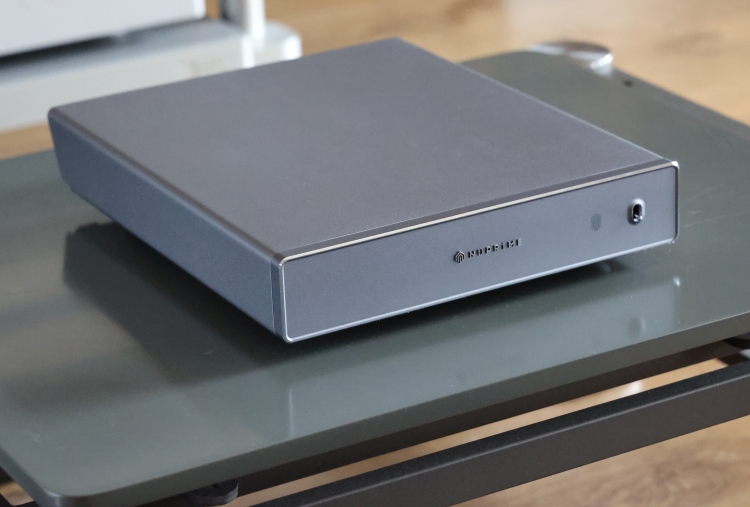
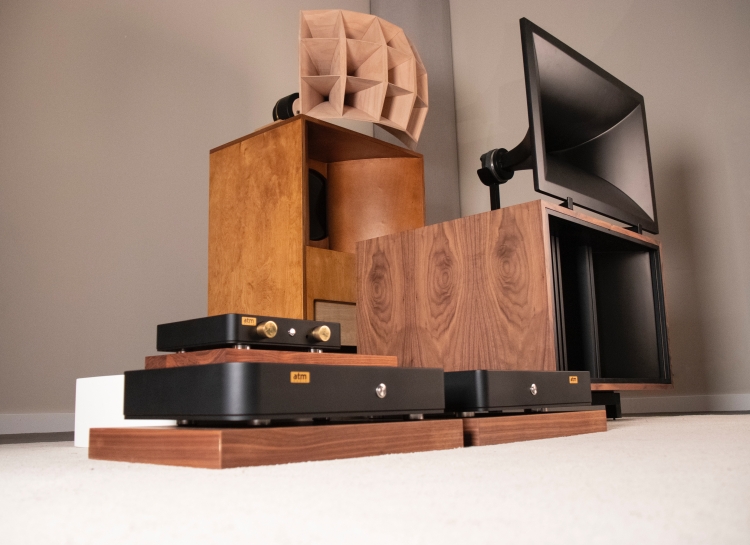
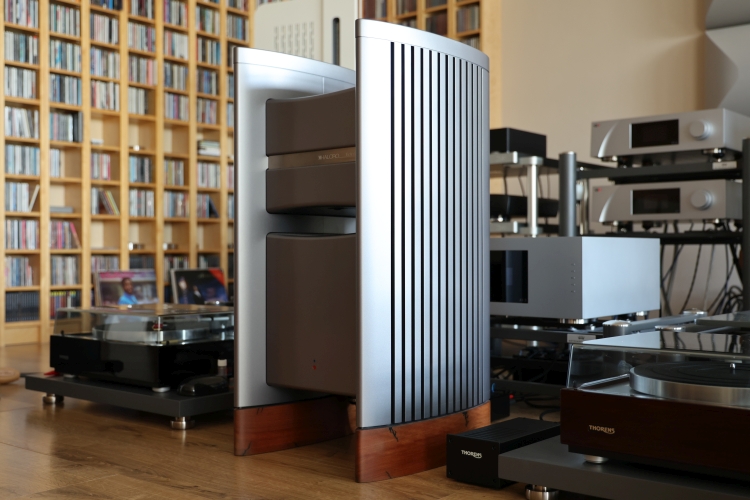
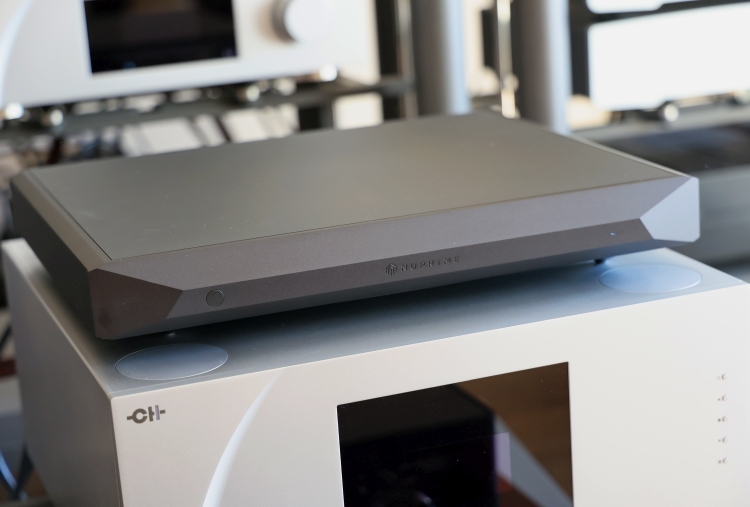
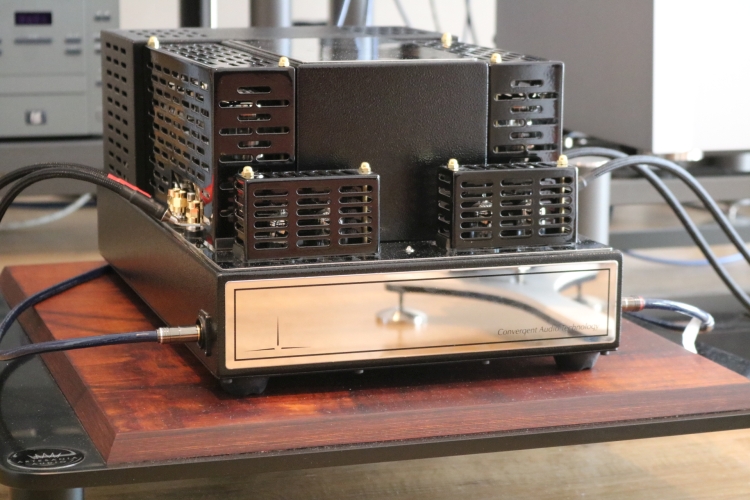
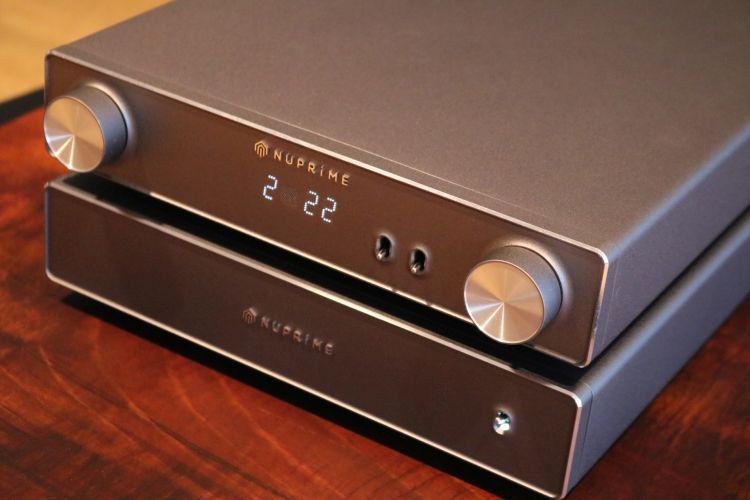
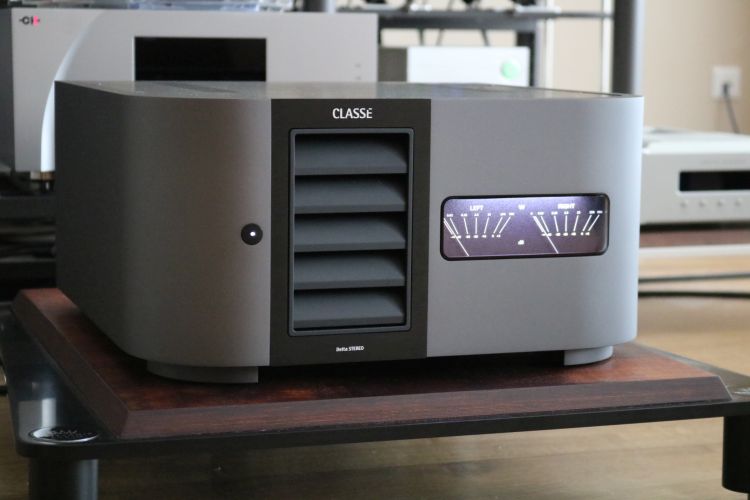
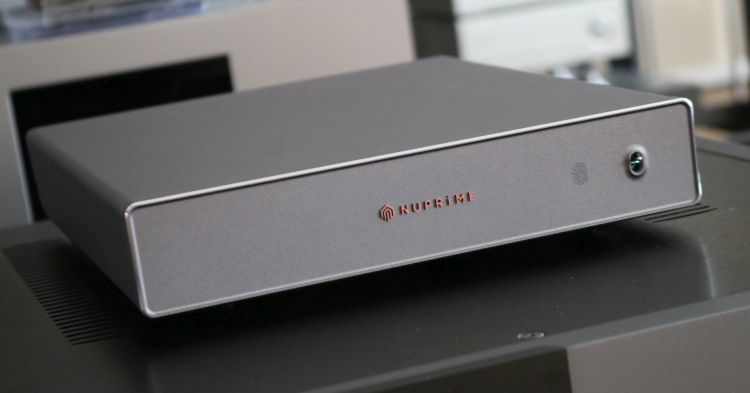
Hello Christiaan,
It is valuable that you make relative comparisons like this one with CH Precision A1.5 compared to the Soulution 711. Also with different types of loudspeakers. I have heard Burmester 911 sound really good together with Sonus Faber Amati Futura and Norost cables but together with a high resolving speaker like my TAD CE-1 the match was far too energetic and emphasized in the top for my taste e.g. the fingers moving on the strings on an acoustic guitar was very clear but it was lacking the fullness from the wooden body.
Do you have any experience with the larger German amplifiers like Burmester, AVM, Accustic Arts or T+A (Audionet rest in peace)? I understand that AVM is started by a few former employees from Burmester. Accustic Arts looks to have many design similarities to Burmester also. Burmester 911 is the reference amp for some audio magazine while other magazines swear by Acoustic Arts. I read that you had a brief encounter with the T+A A3000HV at the Enosound Bilbao 2018 event. The T+A P3000HV and now T+A A3100HV are integrated amps I’m also curious about (many rave reviews), haven’t had a chance to hear them. Would be most interesting to hear if you have any comments about the sonic difference between the German amps in relation to the Swiss amps.
Kind regards,
Per
Hi Per, indeed, because the matching is so important, I try to use review components with a range of other products. Mostly I do that during the review but sometimes, as happened now, this is done in an addendum of sorts. I have used an AVM Ovation A6.2 as part of the Martin Logan ESL 11A review. I found it to be an excellent amp: very clean and articulate and nicely upbeat and dynamic, as well as very pure in the midrange but it was less refined and hi-res than the CH A1’s, or the Rowland model sixes. Alas, I have no real experience with T+A. Based on the demo in Bilbao I also can’t really say anything about the amp in isolation. It seems that we currently do not have T+A distribution in the Netherlands but if I get the chance I’ll see if I can review some of their gear.
Hi Christiaan,
Very happy that you posted your Mini Review of these top amps, the CH A1.5 and the Soulution 711. As far as I know, a fair head-to-head comparison like this is not available anywhere else. Thanks to you and your friend Niels for your efforts to bring us this report.
Though this review is less detailed than usual, due to the circumstances, I was quite interested in your findings, as CH and Soulution are the leading candidates for my next amp upgrade. With Niels’ Magicos, you ultimately had a slight preference for the 711s, a result that echoes the successful pairing of these two brands by other reviewers. The verdict in your room with the Wilsons went to the CH A1s over the same 711s. So many variables involved in these two results, but I can’t help wondering if the sealed-box vs. reflex design difference was a big factor. Could it be that the 711’s stiffer power supply might generally work better than the A1.5’s with difficult-to-drive sealed-box speakers?
Another question that occurs to me regards the possible effect of mechanical grounding. The CH Precision designers have given it some importance in the A1.5, but how about the 711: does it prefer grounding or isolation? My point is whether the carpeted floor setting affected both amps equally, or whether it was a possible handicap for the A1.5. My Goldmund Mimesis power amp, for example, another mechanically grounded design, performs much better when set directly on a hard, solid floor.
The third question I have is about the compatibility of the two amps with Niels’ Spectral pre. The conditions in your test were equal and fair, yet wouldn’t it be interesting to hear these two great amps with their own matching pre-amps (Soulution 760 and CH Precision C1) driving the Magicos? I wonder if your verdict would be the same in that case?
Regards,
Lee
Hi Per, I’m not sure why they have not been compared head to head before as it’s something I assume a lot of people will want to read about. These are both great amps but each with a unique approach and if I had the cash, I’d want to have both. And a Ferrari. And a Ferrari boat. And then I’d sell the latter two and get a bigger house to put more equipment in:-)
It wasn’t a matter of power or control, the A1.5 has plenty of that. It was a difference in the characters of these amps. One full and sonorous, the other agile and refined. There’s more about these two amps in other articles on this site. Having reviewed each with a variety of speakers and in different circumstances, enhanced with what I heard at demos, has me convinced that I’ve pretty much pegged these two amps in terms of character and performance. The latter is not in question for either amp. Ultimately, it’s always about the match.
Good point about mechanical grounding. Indeed, the carpet is not ideal but it’s the best that I could do in this situation. In my tests, I’ve found that both amps are influenced in their sound by the material that they are placed on. I don’t feel that either prefers decoupling or hard coupling per se, that’s up to the individual to determine in a given setup. For me, and for most amplifiers, I prefer normal placement using their integral feet on the floor or coupled via Artesania feet on an Artesania stand. Spiking them or using Stillpoints or similar feet would throw off the balance too much for me but opinions on this may vary.
Regarding pairing each amp with its matching preamp, this is difficult to answer without having heard the preamps in this system. I can say that I am not a huge believer in brand-matching. This may wel work perfectly but in a given situation, another combination may well work better. It’s relative. In any event, what remains is that these two amps have different characters and that the major deciding factor here was the character of the speakers. With that in mind, whichever preamp sounds fuller would probably get my vote. And thinking about it now, that vote might well go to the CH seeing as the C1 is such a full-bodied sounding DAC. Of course, I’ve not heard the Soulution preamp myself but I do know that Niels preferred the Spectral when he made that comparison. If you like, I can check what it was precisely that made him choose the Spectral over the Soulution.
Yes, Christiaan, it would be interesting to hear about Niels’ preference for the Spectral over the Soulution pre. I am also curious to know whether he listened to other speakers with the two pre/power lineups, or whether his testing was limited to just the Magico Q5s.
Hi Lee, ok, I’ll ask him. AFAIK, he judged the Spectral and Soulution preamps only using the 711 and the Q5’s.
Hi Lee, it took some time but better later than never, I guess… anyway, I spoke with Niels the other day and he indicated that he listened to the Soulution 725 preamp when he still used the Spectral SS preamp. He found that the Soulution was good, but not better than the SS. When he got the Spectral SV, he found that that preamp outperformed both the Spectral SS and the Soulution, having a more powerful and more 3D sound.
Thanks, Christiaan, for asking your friend about the comparison. Now I am more curious to hear the Spectral pre, but unfortunately, the chance for an audition in my area is unlikely.
Hello
Rebounding on this very nice review and comparison as I have recently starting to look at those two brands, I would like to have your advice with YG Acoustics speakers ( Hailey 2.2). Those speakers share a bit the same ADN than Magico so Soulution should be a more optimal match ?
Hi Alex, it is purely speculation on my part as I have not directly compared YG and Magico but based on auditions in different locations indeed I would say that the YG sound seems to be comparable to the Magico sound. Which of the two Swiss amps will be the better match for you depends on your taste and the sound you want to have. With the Q5’s in that particular room I found the 711’s solidity and fullnesss to be more satisfying than the A1.5’s refinement and transparency but I also know that the Q5’s can sound fuller than they do in that room. If the Hailey is leaner than the Q5’s, which it may well be, then the 711 may indeed be preferable in terms of overall balance. But if you are after the maximum in resolution and transparency then the 711 is not the best option. Another Swiss brand worth investigating is Nagra. I’ve not heard any of their amps in my system yet but every time I hear them at shows I am impressed. They seem to work very synergistically with Wilsons as well as YG Acoustics.
Thanks Christiaan!
Indeed Nagra is a serious contender as well that I always forgot…
Hello Christiaan,
Now that you are having an extensive knowledge of CH Precision products, do you plan to review their TOTL amp ( the M1.1) ?
Thanks
Alex
Hi Alex, that may well happen some day, but it is more likely that I would review a never version if and when it appears. In any event, first, I’ll look into the analog preamp and the external power supplies.
Ok. Looking forward to it ! Soulution and CH Precision are the two brands I have on my list for my next preamp/amp but as I can’t compare them directly I can not reach any conclusion yet and no one compared their top preamp/amp models yet…
Beste Christiaan, je hebt in 2016! Gesteld dat ook Spectral kleurrijker en zachter klinkt in de trant van CH Soulution etc. Er staan nu een Spectral 30sc en 240 te koop, denk je dat dat veel afwijkt van Soulution 330. Ik moet dan tuurlijk wel aan de MIT!, groet, Frans
Translation:
Dear Christiaan, you have in 2016! Supposing that Spectral also sounds more colorful and softer in the vein of CH Soulution etc. There are now a Spectral 30sc and 240 for sale, do you think that differs a lot from Soulution 330. Of course I have to go to MIT !, greetings, Frans
CP response:
The Spectral components that I heard have a certain rich smoothness that differs from the sound of any CH Precision component and the Soulution 711 amp in particular. I have not directly compared any other Soulution equipment so cannot comment on the 300-series sound. As I understand it, the SS and SC series sound smoother than the SV series. I have compared the DMC-30SV directly with the CH Precision L1 and found that even though the SV has become more solid than its predecessor, it still sounds smooth compared to the L1. That said, I think that Spectral 30sc and 240 will sound very different from the Soulution 330. Ultimately it all depends on the balance that you wish to achieve with your system.